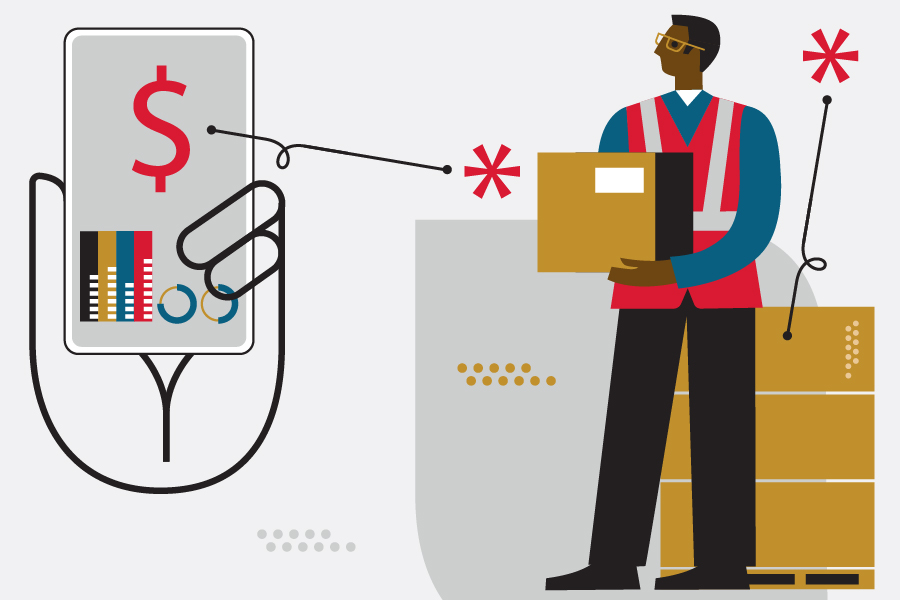Logística de Transporte
Industrias

Acquiring, fulfilling, and shipping ecommerce orders can get expensive. But do you know how much it’s really costing you?
This is where Cost Per Order (CPO) is a vital ecommerce metric to give merchants insight into what it costs to run their end-to-end operation. In this post, we’re going to cover what CPO is, how to calculate it, and steps that you can take to reduce your CPO for a more streamlined, profitable ecommerce business.
Cost Per Order (CPO) refers to the total sum of expenses required for an ecommerce business to acquire and fulfill orders.
By taking account of all the costs that contribute to getting a package to a customer’s doorstep - from marketing spend all the way to delivery - merchants can better understand their profit margins and identify where they might be able to cut costs and improve their bottom line.
Cost Per Order shouldn’t be confused with Customer Acquisition Cost (CAC) which indicates how much it costs for a business to acquire new customers. While CAC is a vital ecommerce metric, it doesn’t account for all of the expenses required to get orders out the door.
If merchants don’t have good oversight on these additional costs, it’s impossible to know whether you’re spending more than you need to. When CPO gets out of whack, this can seriously erode your profit margins - and even result in your business making a loss on certain orders.
Cost of Goods Sold (COGS) refers to the base expenses required to get your inventory ready for sale. This includes manufacturing as well as the supplementary costs that are easy to overlook, such as:
When an online order is placed, this kickstarts a new workflow to get that order to the end customer as quickly as possible. Order fulfillment is a multi-step process that involves a variety of costs and overheads to execute effectively:
On top of direct expenses, there are also non-financial costs that come with fulfilling orders yourself. For example, there can be considerable opportunity costs when your time is taken up managing fulfillment instead of other areas of your business.
While it’s difficult to incorporate this into your CPO, hidden costs are very important to take into account when considering the cost-effectiveness of self-fulfillment versus outsourcing ecommerce fulfillment. Freeing up more time to focus on marketing and growth initiatives is invaluable for your business - and may outweigh the higher financial costs of partnering with a 3PL.
It’s important to separate basic fulfillment costs (those listed above) from the value-added services that some merchants choose to add to their order fulfillment workflow.
This is because additions such as custom-branded packaging are not strictly essential to get orders to your customer, but do enable you to create a memorable unboxing experience that inspires customer loyalty.
However, it’s important to keep track of these elective expenses to ensure they don’t result in you making a loss on orders.
Value-added fulfillment costs include:
Shipping costs are a major aspect of CPO that can vary massively depending on your shipping strategy. For example, many ecommerce opt for using flat-rate shipping as opposed to standard shipping because they’re less likely to encounter fluctuating rates.
The cost of shipping is also affected by the following:
As we mentioned above, CAC is a metric that most ecommerce businesses are already tracking. But it’s really important to ensure that this is also factored into CPO.
For example, if your organic reach on Google and social platforms is low, your business is going to be a lot more reliant on paid advertising to get in front of prospective customers. This is going to increase Customer Acquisition Costs dramatically, which in turn contributes to the total cost of that order.
Your marketing costs will include the following
To calculate Cost Per Order, you need to add up all of your COGS, marketing, fulfillment, and shipping costs over a specified time period i.e. monthly or yearly. This is divided by the total number of orders your business received and fulfilled during the same timeframe.
So, if you received 200 words in the space of a month, your CPO calculation would be as follows:
Cost Per Order = COGS X marketing costs X fulfillment costs X shipping costs X / 200
While it can feel like certain expenses are unavoidable as an ecommerce merchant, there are steps you can take to rationalize costs. A lower CPO doesn’t just help you to achieve better profitability; it’s also a great way to remove inefficiencies from the fulfillment and shipping process that are slowing your operation down.
Unboxing experiences are a fantastic tool to surprise and delight customers, but it also adds significantly to the cost of fulfilling each order. If you’re executing this process on every order you receive, you could end up making a loss on low-value orders.

#thecheapestthing is a viral TikTok trend that took off when savvy consumers realized they could order low-value items from high-end brands (such as keyrings or pin badges) and still get the luxury unboxing experience associated with more expensive purchases. It’s safe to say that the cost of fulfillment definitely outweighs the profits from such orders.
But while the likes of Gucci and Chanel can afford to make a loss on low-value orders in the name of maintaining brand integrity, it’s unlikely that small ecommerce brands will be able to do the same.
To keep your CPO under control, it’s worth setting some form of eligibility for receiving a full unboxing experience. This could be loyalty members of a certain tier, or those who sign up for a shipping membership program.
Shouldering the cost of shipping on all orders is a massive financial burden that causes an ecommerce brand’s CPO to skyrocket. But due to online shoppers’ overwhelming preference to support businesses that offer free shipping, many merchants don’t feel as though they have an option.
Introducing a free shipping threshold is a great way for your business to incentivize high AOVs by rewarding customers who spend more at your business. Even more importantly, it enables you to avoid making a loss on low order volumes and improve profitability.
Multi-node fulfillment is when a merchant uses multiple facilities or ‘nodes’ close to key customer hubs to fulfill and ship orders, rather than just one central location.
Multi-node fulfillment is highly beneficial for ecommerce brands whose customers are spread out nationally, as it helps to prevent orders from having to cross multiple shipping zones. This results in cheaper shipping rates and faster transit times, thereby increasing customer satisfaction.
It can be a major challenge for independent online sellers to achieve a lower Cost Per Order. Why? Because most merchants simply cannot achieve the economy of scale with self-fulfillment that’s needed lower fulfillment and shipping costs, such as wholesale shipping discounts or automation to speed up the picking/packing process.
But by partnering with an ecommerce fulfillment provider, your business can leverage existing infrastructure and technological support to reduce fulfillment costs and access volume-based shipping discounts.
With 18 state-of-the-art facilities located across the United States, Ryder is the ideal partner for merchants who are wanting to scale efficiently and lower their Cost Per Order. Our proprietary technology platform gives full visibility over fulfillment, shipping, and inventory management to ensure that CPO stays in line with what your business expects.